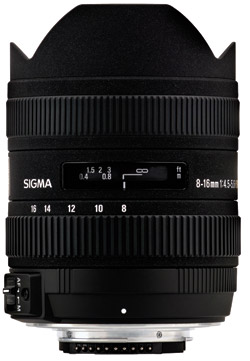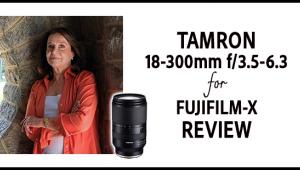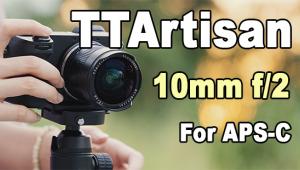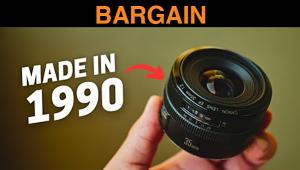Wide-Angle Portraits: Sigma 8-16mm F4.5-5.6 DC HSM Lens Fits The Bill
I really like extreme lenses. Extremely wide, extremely fast, and extremely long lenses will all allow you to create unique images that stand out from the crowd. When I heard about the Sigma 8-16mm lens I wanted to get my hands on one and start shooting, so I asked my editor if I could borrow one from Sigma for testing. He wanted to know what I was going to do with it, so naturally I told him: take portraits. You might, as he did, find this a little odd—taking portraits with a wide-angle lens, and a very wide lens at that. After all, don’t photographers usually use long lenses for portraits?

Why are photographers taught to use long lenses for portraits? There are four basic tenets behind this reasoning: narrow angle of view, shallow depth of field, flattering perspective, and a comfortable working distance between you and your subject. However, flip these “rules” on their head and you’ll see why I like working with wides: wide angle of view, great potential depth of field, unique perspective, and, oddly enough, working right in your subject’s face. In short, I use the special nature of a wide lens to give my portraits a new and unique look.

All Photos © Steve Bedell
High school senior photography is one of my biggest markets. And these days if you take senior photos that look the same as their parents’ photos did, you’re going to be waiting a long time for that phone to ring. Seniors are used to watching music videos and they want exciting, contemporary looks to their photos, not just a simple headshot on a canvas background. They also want the picture to say more about them than just a “straight” headshot portrait, and that’s where having greater depth-of-field potential comes into play.

In a typical portrait, we want to eliminate much of the background. The longer the lens used, the narrower angle of view, the less background to compete with your subject. Conversely, using wide lenses is great when the background is an integral part of the image and you want to use it to tell a story. Newspaper and magazine photographers use wide lenses because many times they need to tell a story in one photo. Including the subject and environment in the image is often a successful way of doing this.
In fact, I’ve been doing wide-angle portraits for high school seniors for years, and they are very popular. The subjects don’t know what it is about them, they just know they look cool. And I’ll often use Photoshop effects and Kubota Actions to add even more punch to them.

All of this brings us to the Sigma 8-16mm F4.5-5.6 DC HSM lens. First, it’s meant for smaller, APS-C-type sensors, not full-frame cameras, so that equates to about a 12-24mm lens on a full-frame camera. HSM is Sigma speak for Hyper-Sonic Motor, their fast and quiet high-speed autofocus system. Wide-angle lenses usually require a whole bunch of elements, and this one is no exception, having 15 elements in 11 groups. This lens looks a little different than other current wide angles in that it is narrow, long, and has a big fat bump of glass on the end, so you can kiss using filters goodbye. It incorporates the latest in glass and construction technology and, from my subjective testing, seems very sharp with great contrast.

Since it’s got that big bump on the end of it, you can’t just throw a lens cap on it, so you need to put the supplied metal ring over the petal lens shade and then put on the pinch lens cap. That big convex eyeball at the end of the lens protrudes at 8mm and moves further back to hide as the focal length increases. I don’t know why the lens doesn’t have the “EX” label that Sigma puts on their pro lenses, but the construction is similar to other EX lenses with a beautiful satiny black finish. I found the lens a pleasure to use in the field.
I can tell you that there is plenty of snap to the images, the autofocus works really well for such a wide lens, and it is a total ball to use for portraits and events. Wedding photographers will love this lens. The lens has an MSRP of $1100 and mounts to all the usual suspects. Check the Sigma website, www.sigmaphoto.com, for compatibility with your camera.


Finally, here’s an important tip for shooting portraits with a wide-angle lens: unless you want the heads to look like footballs, keep the heads close to center and in the same plane as the camera. With a lens this wide anything off-center will have that distinctive apparent wide-angle lens distortion. Also, you’re usually going to have lots of stuff in that wide-angle view, so it pays to slow down or even use a tripod to make sure you’re looking at everything in the frame before clicking.

Technical Specifications
Sigma 8-16mm F4.5-5.6 DC HSM
Lens Construction: 15 elements, 11 groups
Angle Of View: 114.5-75.7
Number Of Diaphragm Blades: Seven
Minimum Aperture: f/22
Minimum Focusing Distance: 9.4”/24cm
Maximum Magnifications: 1:7.8
Dimensions: 3x4.2”/75x105.7mm
Weight: 19.6 oz/555g
Corresponding AF Mounts: Sigma, Canon, Nikon, Sony, Pentax
For more information, contact Sigma Corporation of America at: www.sigmaphoto.com.
Steve Bedell has been a portrait photographer for over 25 years. To subscribe to EPhoto, a free e-mail newsletter with tips for photographers, contact Bedell via e-mail at: sb@stevebedell.com. Also ask about his lighting DVDs.
- Log in or register to post comments

















































